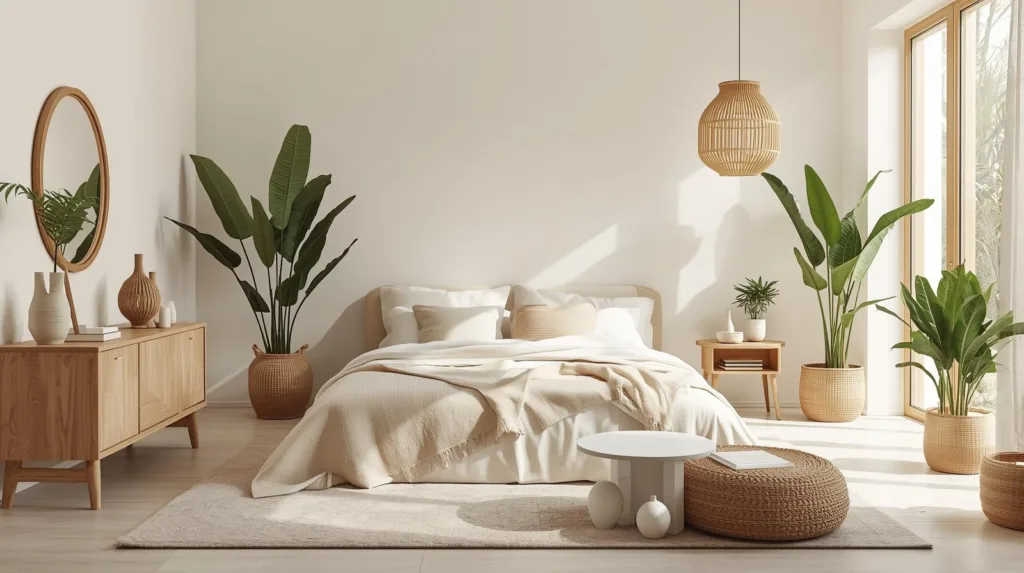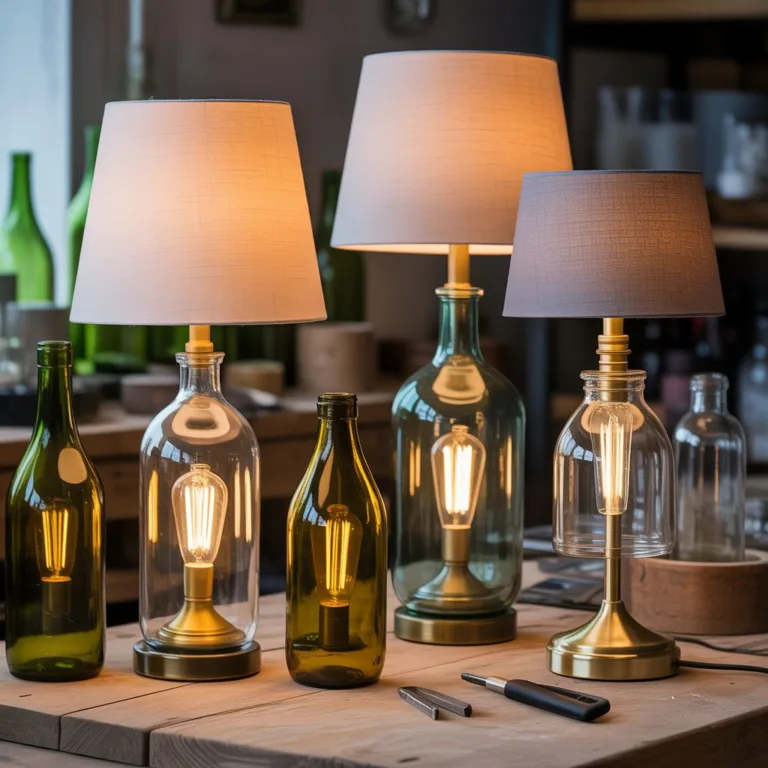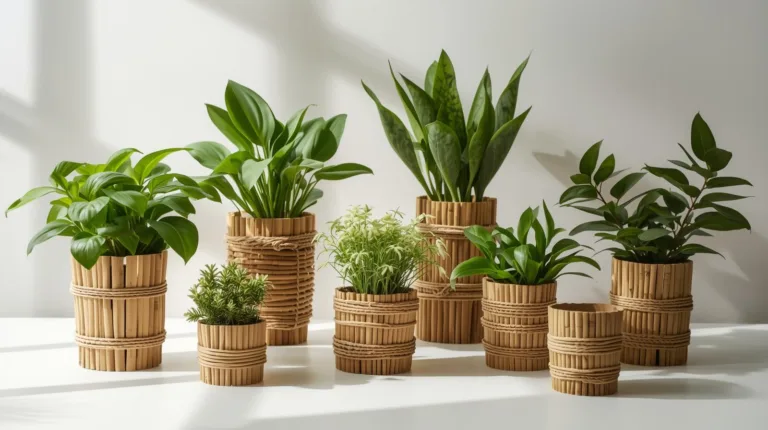Creating a minimalist bedroom is about more than simply reducing clutter—it is a lifestyle choice that emphasizes simplicity, functionality, and calmness. Incorporating natural accents further enhances the space, connecting inhabitants with the organic world and fostering a tranquil environment. By using sustainable materials, eco-friendly décor, and thoughtfully chosen accents, a bedroom can become a sanctuary of both comfort and environmental awareness.

Why Minimalism Matters
Minimalism in bedroom design offers numerous benefits:
- Reduces Stress: A clutter-free environment promotes relaxation and mental clarity.
- Encourages Mindfulness: Minimalist spaces focus attention on what truly matters, fostering intentional living.
- Easier Maintenance: Fewer items mean less cleaning and upkeep.
- Supports Sustainability: Prioritizing quality over quantity encourages mindful purchasing and reduced waste.
Minimalism paired with natural elements creates a space that is not only aesthetically pleasing but also environmentally responsible.
Choosing Sustainable Materials
Sustainability should be at the heart of every minimalist bedroom design:
- Furniture: Opt for wooden furniture sourced from FSC-certified forests or reclaimed wood.
- Textiles: Use organic cotton, linen, hemp, or bamboo fabrics for bedding and curtains.
- Flooring: Consider cork, bamboo, or sustainably harvested wood flooring.
- Decorative Elements: Choose items made from natural fibers like jute, rattan, or wool.
By prioritizing eco-friendly materials, the room becomes both beautiful and ethically responsible.
Color Palettes and Natural Accents
Selecting the right colors and textures is key to a calming minimalist bedroom:
- Neutral Colors: Soft whites, creams, light grays, and muted earth tones provide a clean, serene backdrop.
- Natural Textures: Introduce texture through wooden furniture, woven baskets, linen curtains, or wool throws.
- Accent Greens: Incorporate indoor plants for a touch of life and natural beauty.
The combination of neutral palettes and natural accents fosters balance and a sense of harmony.
Furniture Selection and Layout
When furnishing a minimalist bedroom, simplicity is crucial:
- Bed: Choose a low-profile platform bed or a wooden frame with clean lines.
- Storage: Prioritize multi-functional storage such as under-bed drawers or minimalist wardrobes.
- Seating: Add a simple chair or small bench for comfort without overcrowding the room.
- Nightstands: Use functional, minimal nightstands that complement the bed frame.
Consider spatial flow and ensure each piece contributes both function and aesthetic harmony.
Textiles and Bedding
Textiles play a pivotal role in comfort and visual warmth:
- Bedding: Choose organic cotton or linen sheets in soft neutral shades.
- Throws and Pillows: Add minimal accents through texture, not color overload.
- Curtains: Linen or cotton drapes allow natural light to filter while maintaining privacy.
Thoughtful textile choices contribute to a cozy, inviting atmosphere without compromising minimalism.
Incorporating Natural Light
Maximizing natural light enhances both aesthetics and sustainability:
- Window Placement: Position the bed or seating to take advantage of daylight.
- Sheer Curtains: Allow soft light to filter in, creating a warm ambiance.
- Mirrors: Use mirrors strategically to reflect light and make the room feel larger.
Natural light reduces reliance on artificial lighting, conserving energy while improving mood and well-being.
Bringing Nature Indoors
Natural accents connect the bedroom with the environment:
- Indoor Plants: Small potted plants like ferns, succulents, or snake plants add life and improve air quality.
- Wood and Stone Accents: Use wooden shelves, bamboo decor, or stone planters for tactile natural textures.
- Natural Scents: Introduce essential oils or dried botanicals to enhance sensory experiences.
Integrating nature helps create a restorative, calm, and grounding atmosphere.
Decluttering and Organization
Minimalism thrives on organization:
- Daily Habits: Encourage regular tidying to maintain simplicity.
- Hidden Storage: Use drawers, baskets, or boxes to keep items out of sight.
- Essentialism: Only keep items that serve a purpose or bring joy.
A well-organized space supports mental clarity and promotes long-term sustainability.
Eco-Friendly Decor Ideas
Decorate minimally while being environmentally conscious:
- Upcycled Decor: Repurpose furniture or decorative items instead of buying new.
- Handcrafted Items: Choose artisanal or handmade pieces made from natural or recycled materials.
- Sustainable Lighting: Use energy-efficient bulbs and fixtures made from natural or recycled materials.
These eco-friendly choices emphasize responsibility while maintaining aesthetic appeal.
Color, Texture, and Contrast
Even minimalist spaces benefit from subtle contrasts:
- Monochromatic Schemes: Use different shades of the same color for a layered effect.
- Texture Play: Mix smooth surfaces with rough, woven textures for visual interest.
- Accent Elements: Introduce one or two bold but natural accent pieces like a wooden sculpture or plant display.
Balancing simplicity with texture prevents the space from feeling flat or sterile.
Maintaining a Minimalist Bedroom
Sustain the minimalistic look with mindful maintenance:
- Cleaning Routine: Regularly dust, vacuum, and maintain surfaces to preserve simplicity.
- Seasonal Rotation: Swap out textiles or decor seasonally to refresh the space without adding clutter.
- Plant Care: Water and prune indoor plants regularly to maintain vitality and aesthetics.
Ongoing attention ensures the room remains serene, functional, and inviting.
Benefits for Mental Health
Minimalist bedrooms positively impact mental well-being:
- Reduces Stress: A clutter-free environment decreases mental overload.
- Improves Sleep: Calm, natural surroundings promote better sleep quality.
- Encourages Mindfulness: Simplicity encourages reflection and awareness.
- Promotes Focus: Clear spaces reduce distractions, supporting mental clarity.
The intentional design of the bedroom becomes an essential part of a sustainable, healthy lifestyle.
Engaging Kids and Families
Minimalist and natural design can be a family project:
- Involve Children: Let kids help with plant care, decor arrangement, or choosing textiles.
- Education Opportunity: Teach sustainable living and eco-conscious decisions through bedroom design.
- Shared Spaces: Apply minimalist principles to shared bedrooms or study areas.
Family participation reinforces environmental awareness and practical life skills.
Tips for Affordable and Sustainable Design
You don’t need to spend a fortune to create a serene minimalist bedroom:
- Second-Hand Finds: Vintage or gently used furniture can add character and reduce waste.
- DIY Projects: Create decor or storage solutions from recycled materials.
- Local Sourcing: Buy locally to reduce carbon footprint and support small businesses.
Affordable, sustainable choices are accessible and impactful for both style and environment.
Conclusion
Designing a minimalist bedroom with natural accents is a creative and sustainable way to transform a personal space into a sanctuary. Through thoughtful furniture selection, eco-friendly materials, natural textures, and greenery, the room becomes both aesthetically pleasing and environmentally responsible. The principles of minimalism encourage intentional living, mindfulness, and mental well-being while offering ample opportunities for creativity and family engagement. By blending simplicity with nature, you create a bedroom that is functional, stylish, and restorative.

Lucas Hartman is a DIY enthusiast and sustainability advocate focused on natural crafts and eco-friendly home décor. With a background in arts and design, Lucas creates tutorials that help families and hobbyists transform everyday recycled or organic materials into beautiful, functional projects.



